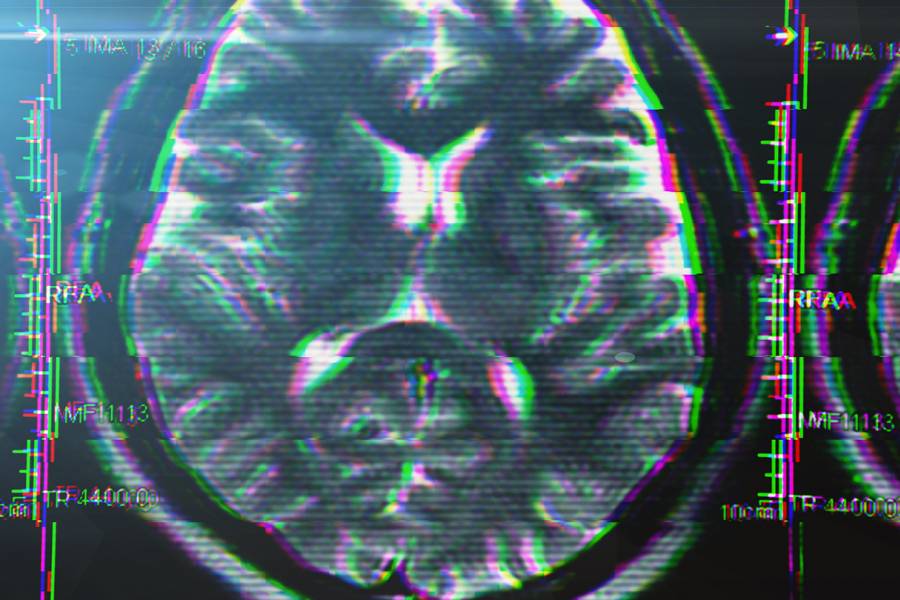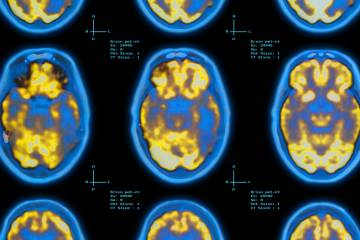- Name
- Rachel Butch
- rbutch1@jhmi.edu
- Office phone
- 410-955-8665
- Name
- Vanessa McMains
- vmcmain1@jhmi.edu
- Office phone
- 410-502-9410
- X
- HopkinsMedNews
Critical illness and major infection can promote brain structure changes and accelerate the process of cognitive decline, suggests a novel analysis conducted by researchers at Johns Hopkins. The study adds to evidence that hospitalization, critical illness, and major infection may diminish brain structures that are most commonly affected by Alzheimer's disease.
"There's long been evidence that critical illness severe enough to require hospitalization is linked with subsequent negative neurological outcomes such as dementia, but we believe our study is one of the first to look specifically at how both critical illness and infection might promote brain changes that set the stage for late-life cognitive decline, and serve as independent risk factors for dementia," says Keenan Walker, a postdoctoral fellow in the Department of Neurology at the Johns Hopkins University School of Medicine and the study's lead author.
Walker cautions that the findings may be limited due to undetected or misclassified billing codes that define diagnosis in the medical records; a lack of information about potentially relevant comorbidities such as delirium; and the "observational" nature of the study, which was not designed to—and cannot—determine or prove cause and effect.
But, he said, "the findings do indicate that hospitalization, infection, and critical illness may well influence changes in brain regions that underlie dementia." He went on to say that "in order to maintain brain health in older adulthood, it is important to maintain bodywide health. Some of the events that can land you in the hospital may serve as risk factors for dementia."
For the study, published this week in the Journal of the American Geriatrics Society, the research team used data from the Atherosclerosis Risk in Communities Study, which included MRI scans showing brain structure, as well as social, demographic, and hospital information for a large cohort of participants followed over a 24-year period that included five medical exams and structured interviews.
The study originally enrolled nearly 16,000 participants ages 45 to 64 from Washington County, Maryland; Forsyth County, North Carolina; Minneapolis, Minnesota; and Jackson, Mississippi.
Using this dataset makes the team's study especially rigorous, Walker says, because of the long follow-up period that allowed the research team to capture hospitalization events over many years. This is important, he notes, because the process of Alzheimer's disease evolves over the course of decades and takes time to diagnose.
For their analysis, Walker's team focused on a subset of ARIC subjects who received a brain MRI during the final medical exam in the study to look at evidence of atrophy and damage to so-called white matter—the part of the brain responsible for transmitting messages.
Data on hospitalization frequency was collected from five in-person exams, annual telephone contact with participants, and a survey of medical records from hospital admissions throughout the ARIC study. The research team identified critical illness using internationally defined classification of disease codes, or ICD-9 codes, used for insurance billing purposes. Critical illness included shock, severe sepsis (blood infections), acute respiratory failure, hypotension, respiratory or cardiac arrest, and the need for cardiopulmonary resuscitation or prolonged ventilation. The team then also identified the number of major infections, including septicemia, other bacterial infection, and pneumonia, the same way.
Of the 1,689 participants included in the analysis, 1,214 (72 percent) were hospitalized, 47 (4 percent) had a critical illness and 165 (14 percent) had a major infection. The participants' average age at the first visit was 52.7 years, 60 percent were women, 28 percent were African-American, and 5 percent met criteria for dementia.
The research team found that hospitalization during the follow-up period, regardless of the reason, was associated with 9 percent greater white matter hyperintensity volume and significantly lower integrity of white matter microstructure.
Among the 1,214 hospitalized patients in the analysis, those who had one or more critical illness had a 3 percent smaller brain volume in brain regions such as the hippocampus that are implicated in Alzheimer's disease. Major infection was associated with both smaller brain volume in regions vulnerable to Alzheimer's disease (2 percent smaller) and 10 percent larger brain ventricle volume.
Although infection can, in some instances, cause critical illness, the research team found that infection alone (without critical illness) was associated with reduced brain volume later in life.
Walker and the research team say they plan to examine how each hospitalization event relates to inflammation in the brain and systemic inflammation. They suspect, based on a growing body of research, that events such as critical illness and infection can cause brain inflammation, which leads to the observed reduction in brain volume. Together, these brain changes are thought to set the stage for cognitive decline and Alzheimer's disease, which is estimated to occur in one in every three older adults in the United States.
Posted in Health
Tagged alzheimer's disease, neurology, dementia











